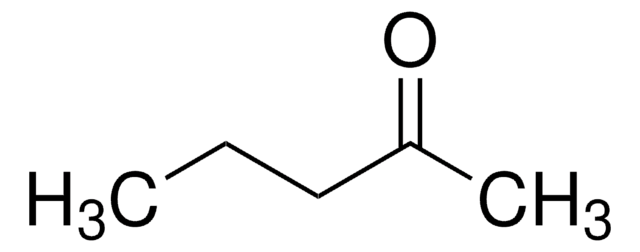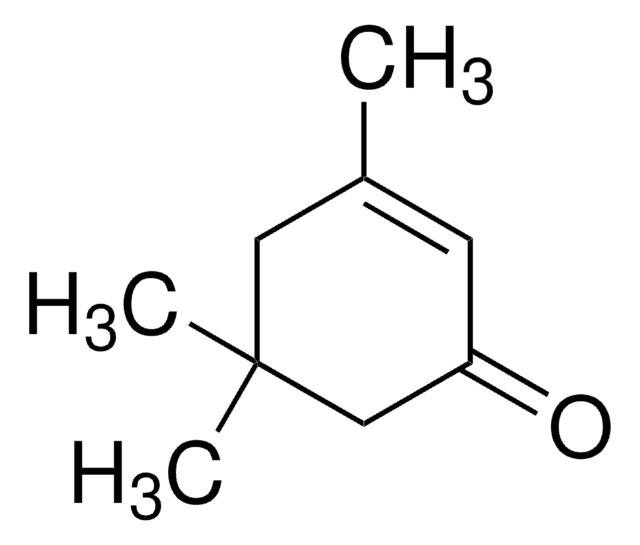W292818
1-Propanol
≥99%, FG
Synonyme(s) :
Alcool propylique
About This Item
Produits recommandés
Source biologique
synthetic
Niveau de qualité
Qualité
FG
Fragrance grade
Kosher
Agence
follows IFRA guidelines
meets purity specifications of JECFA
Conformité réglementaire
EU Regulation 1223/2009
EU Regulation 1334/2008 & 872/2012
Densité de vapeur
2.1 (vs air)
Pression de vapeur
10 mmHg ( 147 °C)
14.9 mmHg ( 20 °C)
Essai
≥99%
Forme
liquid
Température d'inflammation spontanée
700 °F
Limite d'explosivité
13.7 %
Indice de réfraction
n20/D 1.384 (lit.)
pH
8.5 (20 °C, 200 g/L)
pb
97 °C (lit.)
Pf
−127 °C (lit.)
Densité
0.804 g/mL at 25 °C (lit.)
Application(s)
flavors and fragrances
Documentation
see Safety & Documentation for available documents
Allergène alimentaire
no known allergens
Allergène de parfum
no known allergens
Propriétés organoleptiques
alcohol; musty
Chaîne SMILES
CCCO
InChI
1S/C3H8O/c1-2-3-4/h4H,2-3H2,1H3
Clé InChI
BDERNNFJNOPAEC-UHFFFAOYSA-N
Vous recherchez des produits similaires ? Visite Guide de comparaison des produits
Catégories apparentées
Application
- Noncontact In Situ Multidiagnostic NMR/Dielectric Spectroscopy: Details advancements in NMR and dielectric spectroscopy techniques, where 1-Propanol is utilized to investigate solvent interactions and molecular dynamics (Morais et al., 2024).
Actions biochimiques/physiologiques
Autres remarques
Mention d'avertissement
Danger
Mentions de danger
Conseils de prudence
Classification des risques
Eye Dam. 1 - Flam. Liq. 2 - STOT SE 3
Organes cibles
Central nervous system
Code de la classe de stockage
3 - Flammable liquids
Classe de danger pour l'eau (WGK)
WGK 1
Point d'éclair (°F)
71.6 °F - closed cup
Point d'éclair (°C)
22 °C - closed cup
Équipement de protection individuelle
Eyeshields, Faceshields, Gloves, type ABEK (EN14387) respirator filter
Faites votre choix parmi les versions les plus récentes :
Déjà en possession de ce produit ?
Retrouvez la documentation relative aux produits que vous avez récemment achetés dans la Bibliothèque de documents.
Les clients ont également consulté
Global Trade Item Number
| Référence | GTIN |
|---|---|
| W292818-4KG | |
| W292818-1KG | |
| W292818-1KG-K | 4061837862199 |
| W292818-20KG | |
| W292818-20KG-K | 4061837862205 |
| W292818-4KG-K | 4061837517990 |
| W292818-8KG | |
| W292818-8KG-K | |
| W292818-SAMPLE | |
| W292818-SAMPLE-K | 4061837518003 |
Notre équipe de scientifiques dispose d'une expérience dans tous les secteurs de la recherche, notamment en sciences de la vie, science des matériaux, synthèse chimique, chromatographie, analyse et dans de nombreux autres domaines..
Contacter notre Service technique










